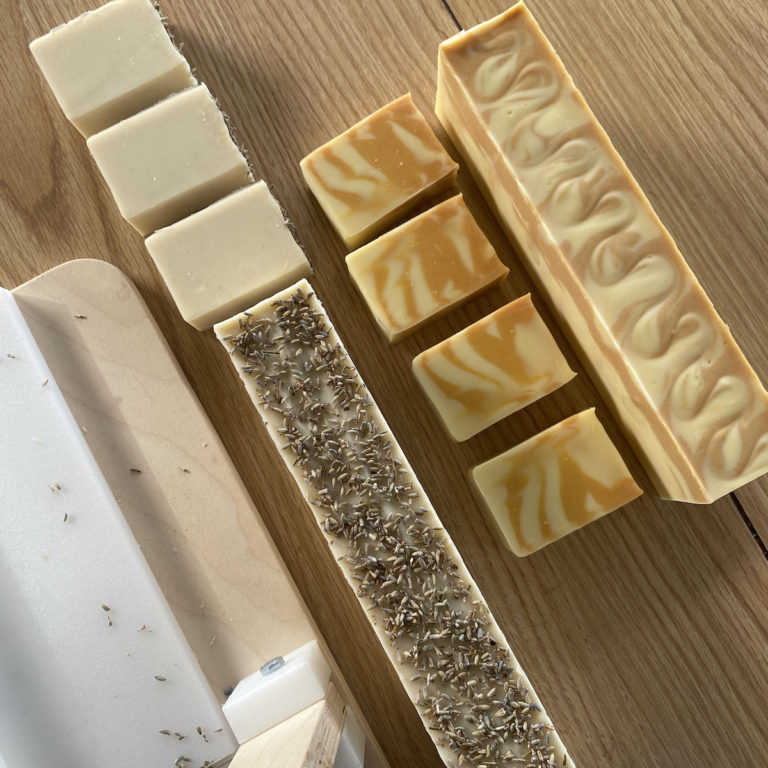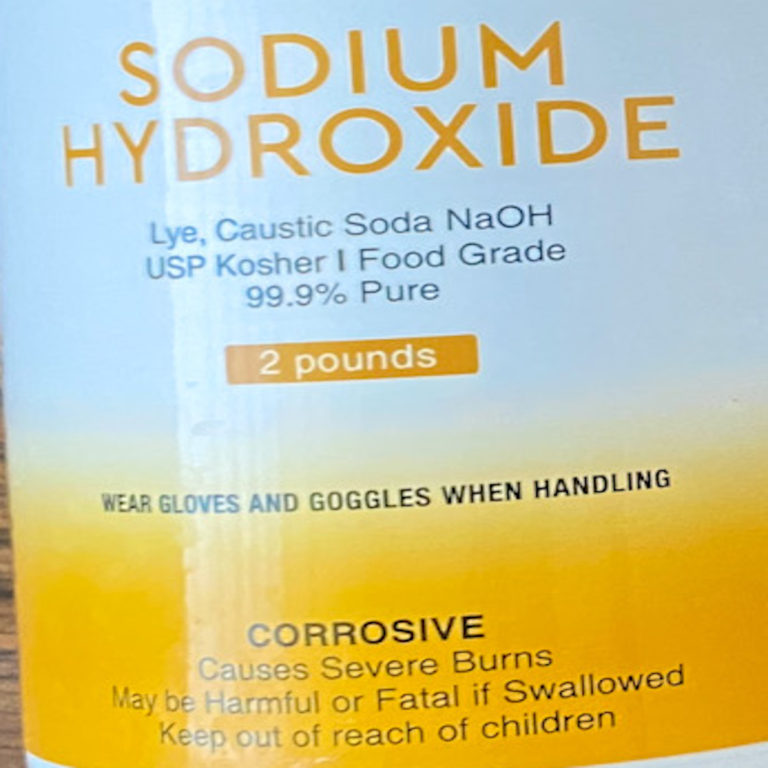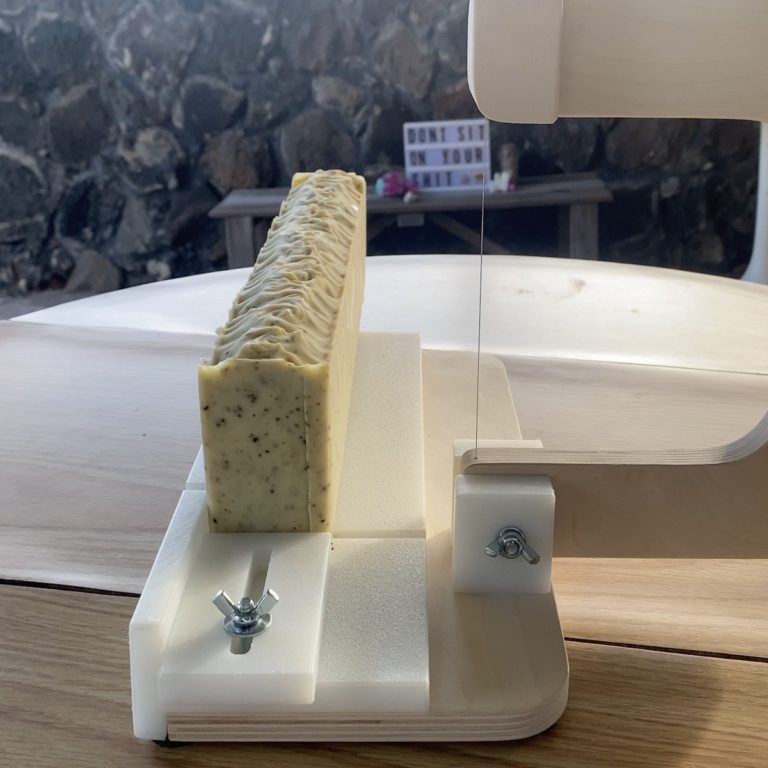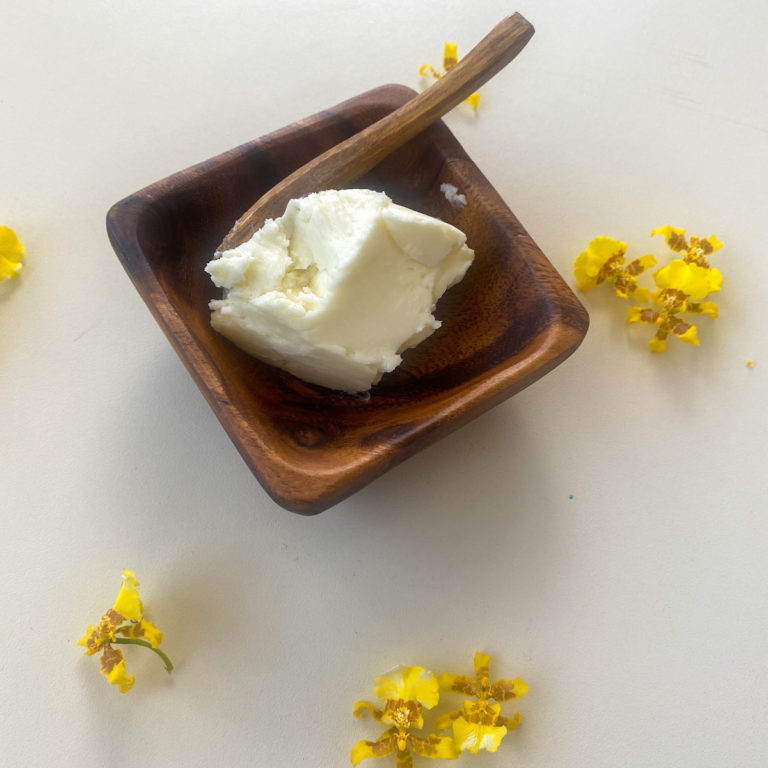How To Make the Best Homemade Soap for Oily Skin
Shine is wonderful on your hair, your car chassis, and the sun, but on your face, it’s not the best. Following the trend toward natural remedies to address oily skin concerns, soap makers are now using organic ingredients in their products. How can you join this movement and start making your own soap?
You can make the best natural homemade soap for oily skin by using plant or earth-based ingredients from environmentally friendly sources. Some herbal and mineral raw materials used to combat oily skin include activated charcoal, tea tree oil, turmeric, green tea, tangerine, rosemary, and aloe vera.
With this article, we hope to help you in your quest for natural homemade soap remedies for oily skin. The objective is to create a soap that cleanses the skin and strips away excess oil but does not dry it out. Check out these recipes from soap making experts and artisans.
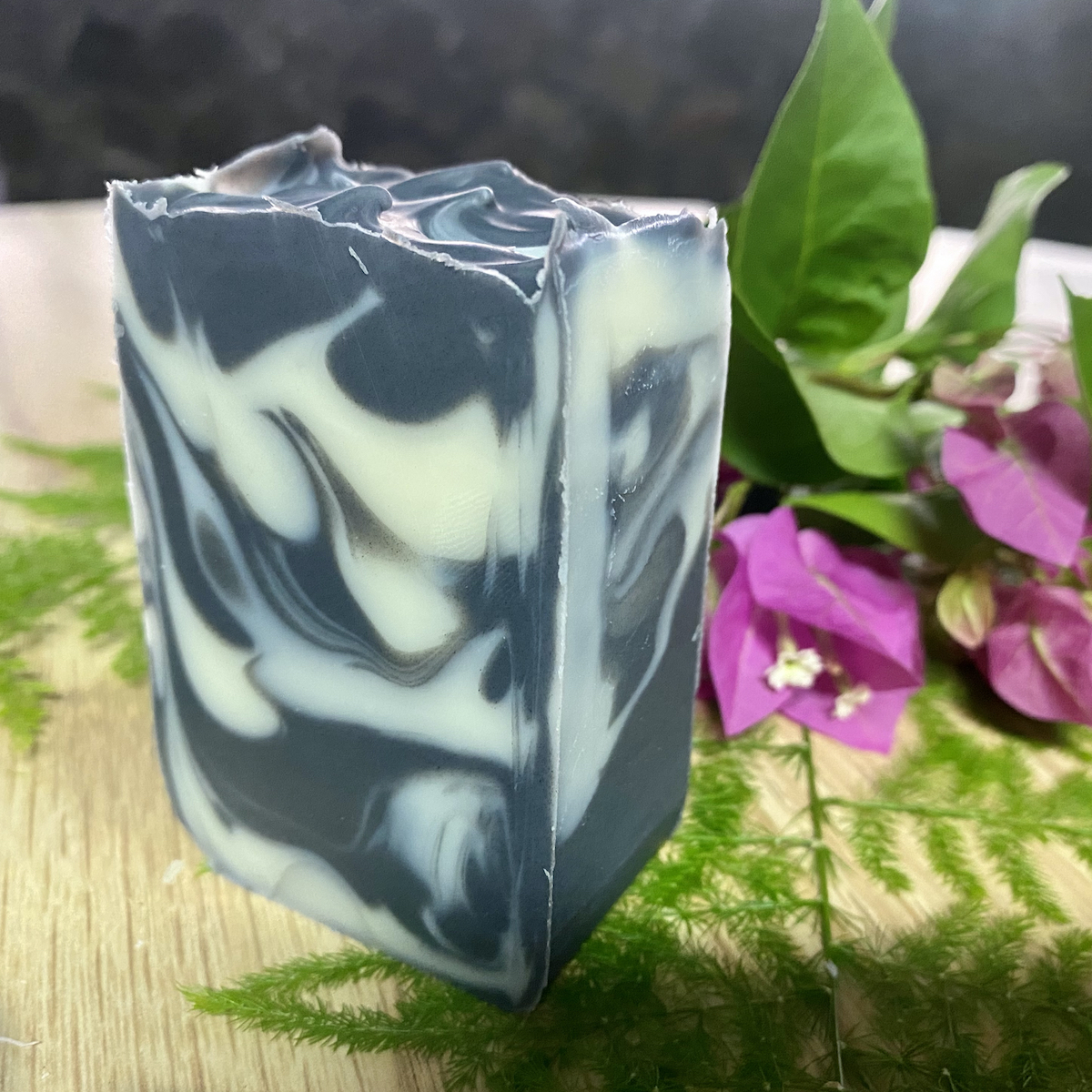
Charcoal and Tea Tree Soap
This recipe from Manissha Dutta Chohan, a soap artisan from Cape of Good Soap in Mumbai, India, uses the safe and straightforward melt-and-pour method.
Ingredients
- Melt-and-pour soap base (one clear, one white)
- Activated charcoal powder (absorbs impurities and detoxifies the skin)
- Tea tree essential oil (has astringent and oil-absorbing properties; controls acne)
- Finely ground rice (soaks up oil)
- Rubbing alcohol in a spray bottle
Procedure
- Cut the white melt-and-pour soap base into uniform chunks, so they melt evenly. Place them into a Pyrex container and zap them in the microwave for about 30 seconds.
- Add two tablespoons of rice and seven to eight drops of tea tree oil to the melted soap. Manissha used Blossom Kochhar Aroma Magic 07.
- Thoroughly mix all the ingredients and pour the mixture into a silicone mold. She used one intended for a big loaf of bread, which makes about seven soap bars. You can use either a smaller one or individual molds.
- Spray some rubbing alcohol on the top layer to smoothen out bubbles. Leave it to set for about seven minutes until it’s firm.
- To make a second layer, cut and melt chunks of the clear soap base. You need a lot of it to produce a thick layer of charcoal.
- Mix eight teaspoons of charcoal powder and 10 drops of tea tree oil with the melted clear soap.
- Pour the mixture slowly and evenly into the mold with the (already set) first soap layer.
- Cut two horizontal strips of the white soap base (about .5 inch in diameter each) the length of the mold. Place these in the center of the almost set charcoal layer for design purposes.
- Pour the remaining charcoal soap mixture into the mold to cover the two white strips entirely. Let it set for 30 minutes. (Some soap makers wait for a couple of hours overnight.)
- After the entire mixture has set, turn the mold upside down to release the black and white solidified soap. Cut the bars into manageable blocks for use.
Charcoal Soap With Six Oils
The Soap Queen’s charcoal soap version comes with six types of oils.
Ingredients
- Activated charcoal: two tablespoons
- Tea tree essential oil: 1.7 ounces
- Castor oil: 1.8 ounces; 5% for more lather (typically 2-3% in cold process soap recipes)
- Coconut oil: 9 ounces; 25% (adds cleansing properties)
- Olive oil: 14.4 ounces; 40% (lends gentleness to the soap solution)
- Palm oil: 9 ounces; 25% (lends firmness to soap bars)
- Tamanu oil: 1.8 ounces; 5%
- Lye (aka sodium hydroxide): 5.1 ounces
- Distilled water: 10.1 ounces; 15% water discount (to avoid a sticky consistency and to make it easier to release the soap from its mold)
- Sodium lactate: two teaspoons (also aids in separating the soap from the mold)
Procedure
You can access the instructions from this tutorial.
Jojoba, Glycerin, and Wheat Bran Soap
OneHowTo’s homemade soap recipe is an affordable solution that eliminates excess sebum.
Ingredients
- Jojoba oil
- Olive oil
- Glycerin
- Wheat bran flakes
Procedure
- Melt the glycerin.
- Coat silicone molds with olive oil.
- Add two tablespoons of wheat bran flakes and two tablespoons of jojoba oil (per soap bar*) to the melted glycerin.
- Mix all the ingredients and pour the mixture into molds. Let it sit for about two hours. After it has hardened, it is ready for removal from the molds.
A note on soap bar size: A standard bar of soap weighs 3.5 to 4 ounces. A recipe that creates approximately 30 ounces yields 7 to 10 bars, depending on how you cut the soap.
DIY Green Tea and Aloe Vera Soap
Nivetha Boobalan offers this simple, fast way to make this soap:
Ingredients
(Items in parentheses are the brands Nivetha used.)
- Ultra-clear melt-and-pour soap base (D Roots Botanica)
- Green tea (Organic India’s Tulsi Green Tea Classic)
- Natural, organic aloe vera gel (Olive Ayurveda Pharma & Research Centre)
Procedure
- Cut the melt-and-pour soap base into chunks and place them in a metal bowl.
- Melt these chunks using the double boiling method: Place the soap-filled bowl inside a bigger bowl filled halfway with water. Heat this bowl-in-a-bowl contraption on an ordinary stove. Remove from the flame once the soap is melted.
- Cut open one green tea bag and sprinkle its powdered contents into the melted soap base.
- Add three teaspoons of aloe vera gel.
- Mix everything.
- Pour the mixture into a mold. Leave to harden, then take the resulting soap out of the mold.
Benefits of this Soap
- It’s gentle.
- It controls oil.
- It moisturizes the skin without drying it out.
Cold Processed Soap With Green Tea and Tea Tree
Ke, the founder of Luxe and Nature Botanicals plant-based skincare, recounts the turning point that led to her creating organic remedies for oily skin. She explains that all her life, she suffered from having sensitive skin that reacts to almost every substance. She thought she was the only one who had problem skin until she heard others complain about concerns similar to hers.
She spent many years using the wrong (commercially prepared) products to the detriment of her skin, so she decided to make her own. Her goal was to create homemade products safe for babies yet flexible enough to address adult skin concerns. After years of researching and experimenting, she finally produced the products she wanted and launched Luxe and Nature in 2018.
This is Ke’s soap recipe for oily skin. Email her for the exact proportions of the ingredients. She also teaches soap making classes on her website. For a demonstration of this recipe, see her video.
Ingredients
- Powdered green tea
- Powdered tea tree essence
- Cocoa or shea butter
- Lye
- Distilled water**
Procedure
- Prepare the water-and-lye solution**. Pour this mixture into a container. Set aside.
- Line molds with wax paper.
- Put some chunks of butter in a separate container and melt them.
- Pour the lye solution into the container with the melted butter. Use a sieve to filter out solid particles. Mix with a blender (preferably an immersion blender with a stainless steel shaft).
- Add green tea and tea tree into the mixture, then blend.
- Pour the fluid into the lined molds. Create texture by drawing figure eights into the mixture while it’s still in liquid form.
- Leave to harden and set, then take the resulting soap out of the molds.
The Lye-and-Water Process**
Dean Wilson demonstrates how to make a lye solution for cold processed soap in this video:
Distilled water is a crucial ingredient in the soap making process because it is used to make a lye solution, which is then mixed with oil. While evaporating, water compels the lye and oil to complete saponification (the process of turning into soap).
What’s the Verdict on Lye?
Some have concerns about lye. Many can’t decide whether it’s good or bad. By itself, it’s corrosive and can irritate the eyes, skin, and lungs. It is, however, necessary in making soap. Just don’t measure lye or mix it with water in tin or aluminum containers. Use glass, stainless steel, or heavy-duty plastic instead. Saponification done correctly won’t have any lye left over in the resulting soap.
How To Calculate Fat-to-Lye Ratios
It’s okay to adjust most ingredients to produce batches of varying sizes without being too strict about the measurements. Calculating a safe amount of lye, however, is essential. The quantity depends on the kind and amount of oil or butter used. Always calculate the lye with a soap calculator like Soapcalc.
Green Olive Clay, Charcoal, and Aloe Vera Soap
This recipe is from Soy and Shea’s Keeley. It is loaded with activated charcoal, green olive clay, and her home-grown aloe vera. Soy and Shea in Australia specializes in handmade soaps and fragrances. They offer international shipping. Join their Patreon channel for more recipes.
For this recipe, all of Keeley’s palm-free and vegan ingredients are at room temperature. She got her inspiration from a Royalty Soap recipe but modified it to include her favorite ingredient, shea butter.
Ingredients
- Activated charcoal
- Green olive clay (one of the strongest ingredients customarily used in facial masks)
- Aloe vera (preferably raw from the plant) or commercial gel (which she doesn’t recommend because it may contain ingredients unsuitable for homemade soap making)
- Distilled water
- Lactate (added to the distilled water solution)
- Green tea powder
- Camellia tea seed oil
- Tea tree essential oil
- Lavender and rosemary essential oils (to tone down the strength of the tea tree oil)
- Mango seed butter
- Shea butter: 3%
- Coconut oil: 30%
- Palm oil: 20%
- Olive oil: 42%
- Castor oil: 5% (helps with the lather)
- Superfat: 5%
- ye-and-water solution: 33% water**
Procedure
Watch Keeley demonstrate the instructions in this video:
She presents the oil, water, and lye process separately in this tutorial:
- Blend all the ingredients except the charcoal.
- When you add the charcoal solution to the first liquid batch (which looks green), pour it using a drop-swirl (circular) motion but don’t blend to maintain the swirly design effect.
- Let the mixture sit overnight (or 24 hours) before taking the soap out of the molds.
Soap for Combination Oily and Acne-Prone Skin
According to Bellatory’s Elizabeth Harp, most soap recipes include different kinds of oil that offset or complement each other. Most hard oils, like the coconut variety, are excellent at cleansing the skin but don’t moisturize well. Soft oil types, such as meadowfoam, olive, and rosehip oil, don’t cleanse by themselves but moisturize efficiently.
Soaps containing hard oil tend to be harsh, while those made solely of soft oils may be too greasy. Skin with acne caused by overactive sebaceous (oil) glands versus that caused by harsh cleansers needs a soap with a coconut oil base for deep cleansing. Castor oil may be the middle ground with its multipurpose properties of lathering, purifying, and hydrating. The soap maker may then choose to balance the castor and coconut oils with acne-fighting tea tree oil.
A Note on Fat and Oil
Isn’t it counterproductive to put multiple oils in soap when the goal is to reduce the oil on the skin? Not so. Oils are necessary for the soap making process because lye not appropriately mixed with oils can burn the skin. Oils interact with lye in saponification and act as a cushion between the skin and the lye. This oil-lye soap combo cleanses the skin gently.
The two kinds of oil, hard and soft, differ in their properties. The former is solid at room temperature, while the latter is liquid. A soap’s lathering capability and hardness depend on the oil. The best one depends on your preference. Soap used to be made with animal fat, but many soap makers these days prefer plant-based oils. Regardless, don’t make soap with petroleum-based oils.
Natural Ingredients Used in Soap Making for Oily Skin
Many people with oily and sensitive skin prefer natural remedies to commercial beauty preparations because many artificial products lead to more skin issues. Most natural products include readily available household items. These include:
Activated Charcoal
This is carbon from charcoal. That’s why it’s also known as activated carbon or activated coal. Some people substitute “activated” with “active.” When sourced from coke, the substance is called activated coke.
Apart from its industrial applications, activated charcoal is used to treat indigestion, flatulence, diarrhea, and oral ingestion-related overdose and poison incidents. It is incredibly oil-absorbent. Despite making soap black and producing gray lather, it doesn’t stain fabric.
Mango Butter
This sumptuous natural fat from the seeds of mango pits has medicinal uses. It flushes out dirt, toxins, and impurities from the skin. Its emollient properties soothe, nourish, and improve the elasticity of the skin.
Vitamin E
This vitamin’s antioxidant properties regulate oil production. It also deep-cleans pores, boosts circulation, repairs damaged skin, heals sunburn, locks in moisture, and decelerates aging by neutralizing skin-damaging free radicals. It is also used to treat blisters, canker sores, chapped lips, eczema, and warts.
Palmarosa Essential Oil
This oil balances sebum production and hydration levels while revitalizing cell regeneration. It is valuable in treating dermatitis, scars, acne, minor skin infections, and rejuvenating the skin.
Palmarosa’s non-skin benefits include relaxation, clarification of the mind, stress alleviation, and relief from physical pain (especially sore muscles), and emotional exhaustion. It’s also an outstanding recovery aid as it lowers fever. Its digestive benefits include clearing intestinal infections.
Tea Tree Oil
This oil is one of nature’s most potent immunity boosters. It is a powerful natural weapon against acne. Its astringent properties zap fungi and bacteria, making it ideal for cleaning wounds. It has antiviral, antimicrobial, antiseptic, balsamic, insecticidal, and expectorant components. It also offers muscle ache relief.
Cambrian Blue Clay
A not-so-common oil-buster, Cambrian blue clay from Leningrad, Russia, is valued for its oil-drawing ability. That’s why it’s commonly used in face masks. It also makes skin smooth and supple, lessens the appearance of wrinkles, stimulates circulation, and boosts cell metabolism. Its regenerative properties make it a powerful anti-aging solution. That’s why it’s used in spas, resorts, naturopathic clinics, and cosmetics.
Mother Earth’s oldest blue clay, the Cambrian, has a distinctive mineral that kills the bacteria that cause breakouts. Its blue color comes from high iron content. It gives soap shades of soft green to blue.
Tamanu Oil
This is a unique oil with a nutty odor and anti-fungal properties. Its proponents claim that it heals scars and sores and fades stretch marks. More clinical tests, however, are needed to prove its curative abilities. Nonetheless, it’s an exceptional moisturizer.
Rosemary
Rosemary essential oil is a concentrated plant essence with medicinal properties. It kills the bacteria that causes acne. It takes a massive amount of rosemary leaves to produce a small container of essential oil. Rosemary leaves in soaps (as opposed to the essential oil variant) are intended more for decoration and exfoliation than therapy.
Tanya Anderson, the author of the Lovely Greens Guide to Natural Soap Making, combines rosemary essential oil with Cambrian blue clay, shea butter, refined coconut oil, sunflower oil, castor oil, and pomace (a grade of olive oil) in her soap for oily skin.
Gems From the Rainforest
The Natural Handcrafted Soap Company recommends a combination of copaiba oil from the Brazilian rainforest and sea kelp because both absorb oil and have superior rinsing capabilities. Copaiba is a resin or plant oil from the Copaifera family used in fragrance and medicine. The company sells a soap with copaiba, açaí berry, and coconut oil—it works wonders on oily skin.
Combinations
Skincare experts recommend a combination of lemon and lavender essential oils to eradicate excess grease. Coconut oil and jojoba oil together are perfect for oily skin, thanks to their fast absorption, moisturizing prowess, and regulation of sebum production.
Other effective anti-oil combinations include apple and lime juice, and organic yogurt, fuller’s earth, and strawberries.
Aloe vera heals multiple skin conditions, soothes sunburnt skin, has virtually no adverse effects, and rarely reacts negatively with other raw materials. That’s why it’s commonly mixed with multi-ingredient preparations.
Other Essentials
- Turmeric
- Peppermint
- Shea butter
- Kelp
- Citrus fruits like tangerines and grapefruit
- Lemongrass
- Anise
- Honey
- Lavender
- Jasmine
- Tomato puree
- Mashed papaya
- Oatmeal—scrapes off dead cells
- Chamomile and rose hips—minimize fine lines and increase hydration
- Bay laurel—believed to alleviate pain and the adverse effects of cancer, diabetes, and gastrointestinal problems
Mineral and Clay Additives
- Green clay
- Dead Sea mud
- Rose clay—eliminates dirt and toxins
- Titanium dioxide—a natural sunscreen
Conclusion
To some people with oily skin, the excess sebum is a minor nuisance that can be solved with an alcohol swab or a powder puff. But to countless others whose condition is more advanced, especially if it has spawned other issues like cystic acne, it’s a major assault on their confidence.
Isn’t it heartwarming to know that you can make a natural product that has the potential to help multitudes? We hope you will take the above soap making recipes a step further and put them to good use. May your efforts be rewarded very soon.

